#Film Technology
Explore tagged Tumblr posts
Text

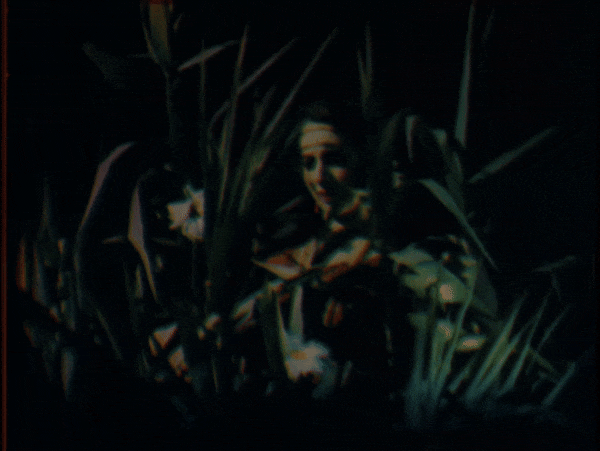



Study of Light / Étude de la lumière (1923)
[letterboxd | imdb | HENRI]
Director: Maurice Audibert
Study of Light is a short showcase for Maurice Audibert’s method of natural color photography—a process of tri-color additive synthesis—which he developed and refined with Rodolphe Berton starting around 1909. The process involved using multiple lenses and prisms to capture three photograms per frame of film, arranged in a triangle printed within each frame on 65mm film. [see what that looks like at Timeline of Historical Film Colors] Then, using color filters during projection, the three photograms would be synthesized into a single color image.
This, of course, required specialized projection equipment, which Audibert would address in further refinements in his technique. (If you’ve ever looked into the development of color and sound film technologies before they became habitually adopted, you know that extra work/expense for exhibitors was a typical hurdle for inventors.) Audibert himself recognised some of the issues with his process, including colors shifting due to imperfect superimposition and a stereoscopic look to the projected images due to variation in the depths of field for the superimposed images. As a 2020s viewer, I find the dreamy, gossamery look visually interesting, though I recognise that that wasn’t what Audibert was aiming for!
All that said, Audibert transitioned to experimenting with a subtractive rather than an additive process in the year following the production of this film.
#1920s#1923#Maurice Audibert#silent cinema#my gifs#film#cinema#film history#cinematography#french cinema#silent film#silent movies#silent era#classic cinema#classic film#classic movies#filmblr#film technology
77 notes
·
View notes
Text
0 notes
Text
Jim Carrey Is Open To Playing The Grinch Again, But With The Help Of Motion Capture Technology
Jim Carrey's back for more Grinch antics, but this time with a modern tech twist! Will motion capture bring new life to our favorite holiday villain?
#Jim Carrey#Grinch Sequel#Motion Capture#How The Grinch Stole Christmas#Holiday Movies#Film Technology
0 notes
Text

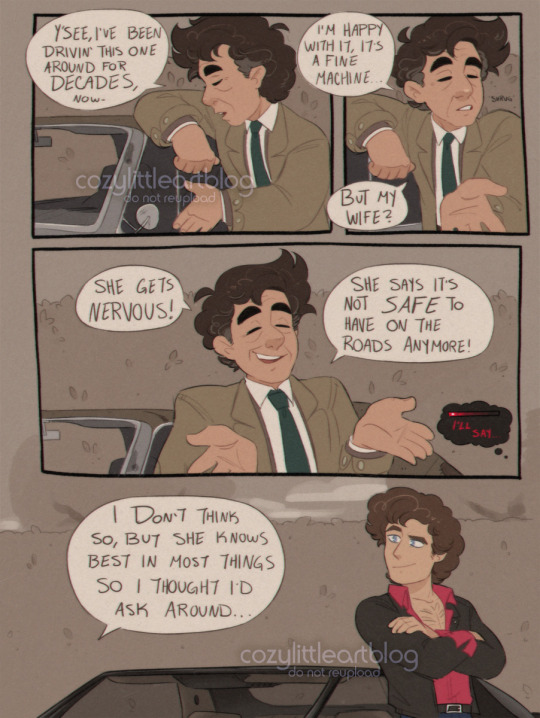
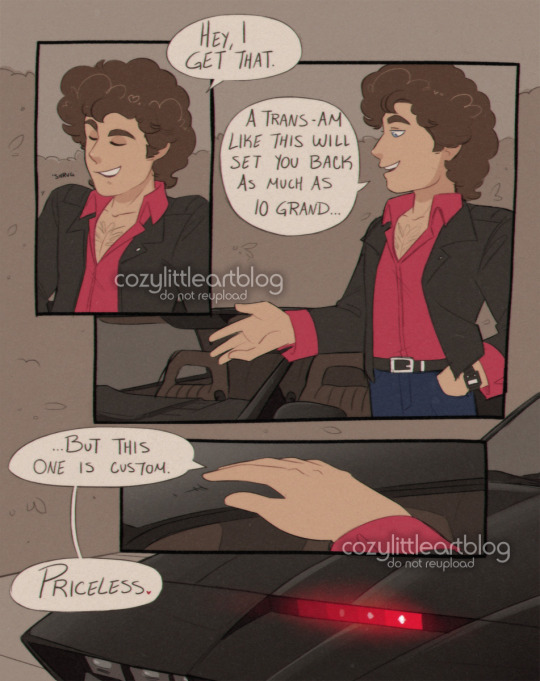
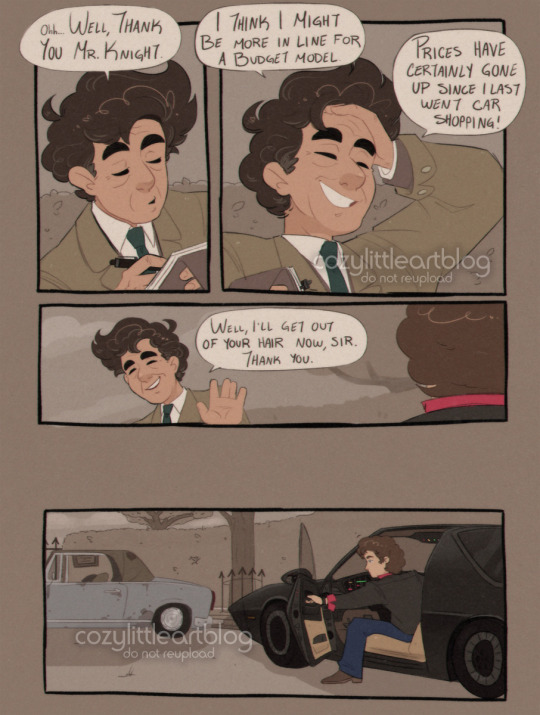
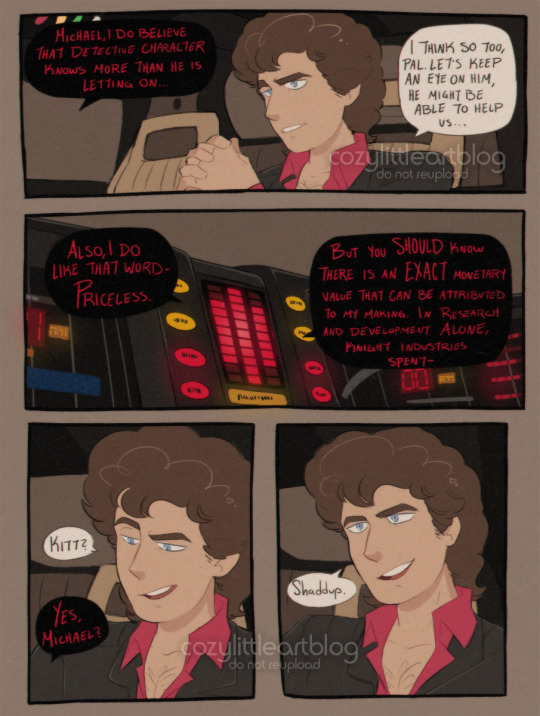
Columbo and the Knight (1984)
put me in the universe where Columbo ran through the 1980s and had a crossover episode with Knight Rider. I think they deserved it, and I am not just saying that because they're my two favorite Old Shows. @telebeast wrote a little fanfic blurb about it and I HAD to visualize it into a comic (which is also the longest comic I have finished thus far at five pages...), so writing credit goes to them.
Autism W!
#columbo#knight rider#art#michael knight#kitt#comic#highlight reel#crossover#telebeast#there are two small easter eggs here. can you find them. they were somehow not Entirely lost when i resized these for the public#this is what i mean when i say I Draw And It's Everyone Else's Problem. look at my INCREDIBLY niche crossover comic boy#if the knight rider fandom has like 12 people in it. how many of y'all have seen columbo#this comic is for like 4 people and me and phoenix are already two of them#niche is my specialty lets be real. weird niche obscure shit and ships nobody's paid attention to yet#not to suggest this is ship art. columbo has his wife and michael has his car lmfao#stylizing real people is EXTREMELY hard btw sorry for when they get off model. its partly a 'better imperfect than never finished' situatio#cant tell you how much i redrew some of these panels. weeps#this took me 2 weeks but i think i thumbnailed it all in may and the ideas been rollin around in my head since march#is anybody good at editing. please edit michael and columbo into an image together like its a screenshot. NOT generated. edited.#it would be so cool#ive drawn columbo a lot but i haven't drawn a lot of michaels. i was learning things about his outfit AS I WAS DOING THE DAMN#COLORS ON THIS. all the lines done. it was too late to change anything. i did all the lines and colored page by page#i realized my mistakes on like page 3. 1 and 2 were already done. it was Too Late.#imagine it though. them working a case together. switching between the more serious tone of columbo vs the goofier#action antics of michael and kitt. columbo being so impressed by Modern Technology. there's more i could say but phoenix may write#more of this crossover and i don't want to spoil it :'3#there's opportunity here though i swear. there's gold to be dug.#i like how kitt gets shading but columbo's junker peugeot doesn't. kitt looked wrong without any. columbo's car is matte and dirty#i also applied effects to this to make it look a little film-grainy and VHS like. some CRT TV vibes#the only question left is. did they put knight rider into columbo; or columbo into knight rider 🤔
4K notes
·
View notes
Text
Optical Film Market's Influence on the Future of Display Systems
The global optical film market size is anticipated to reach USD 48.35 billion by 2030, according to a new report by Grand View Research, Inc., growing at a CAGR of 8.7% over the forecast period. Increasing demand for consumer electronics devices is expected to significantly drive the industry during the forecast period. Increasing demand for better visibility, optimum brightness, and lower power consumption for illuminating automotive instrument panels and displays is creating lucrative opportunities for optical film in automotive display applications. In addition, properties, such aslight control & enhancement, increased brightness, improved contrast, better sunlight durability, and others, are propelling the product demand in various applications.
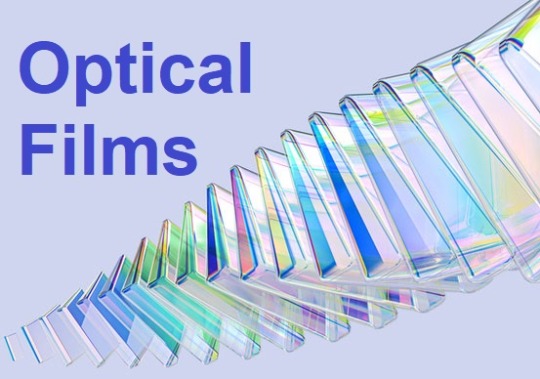
Optical Film Market Report Highlights
In terms of revenue, the polarizing film segment accounted for the maximum share in 2021. The segment is expected to grow further at a steady CAGRover the forecast period
The smartphones application segment accounted for a significant revenue share in 2021 and will retain its industry position throughout the forecast period
The rising middle-class population, shifting spending priorities, and changing consumption patterns towards more discretionary spending are driving the segment growth
The Asia Pacific region led the global industry and accounted for the largest share of the overall revenue in 2021
Strong manufacturing bases of consumer electronics companies and the presence of several end-use industries in the region are anticipated to fuel the product demand over the forecast period
For More Details or Sample Copy please visit link @: Optical Film Market Report
These applications include automotive displays, televisions, desktops & laptops, smartphones, tablets, signage & advertising display boards. Moreover, the rising adoption of digital & advertising display boards in commercial verticals, increasing infrastructural development, especially in emerging countries, and technological advancement in display products are projected to create product demand in signage & advertising display boards. Asia Pacific is anticipated to progress at the fastest CAGR over the forecast period. China led the APAC regional market in 2021 owing to the rising demand for the product in applications including automotive display, televisions, desktops & laptops, smartphones, tablets, signage & advertising display boards.
In addition, a well-established manufacturing base for consumer electronics in Taiwan, China, and South Korea is anticipated to provide further impetus to the region’s growth. However, the recent outbreak of COVID-19 in countries, such as India, China, and Japan,is impacting the product demand in signage & advertising display boards, smartphones, and otherapplications.Declining demand from end-use consumers, nationwide or partial city lowdown, and a slowdown in manufacturing activities as a result of the pandemic further hampered the region’s growth in the short term.
OpticalFilm #DisplayTechnology #VisualInnovation #ScreenEnhancement #FilmicPrecision #DisplaySolutions #VisualExcellence #TechTrends #DisplayQuality #FilmTechnology #VisualCommunication #InnovationInDisplay #ScreenInnovation #DisplayTech #ClarityInVision #VisualPerformance #DisplayFilm #OpticalInnovation #FilmMarket #HighPerformanceDisplays
#Optical Film#Display Technology#Visual Innovation#Screen Enhancement#Filmic Precision#Display Solutions#Visual Excellence#Tech Trends#Display Quality#Film Technology#Visual Communication#Innovation In Display#Screen Innovation#Display Tech#Clarity In Vision#Visual Performance#Display Film#Optical Innovation#Film Market#High Performance Displays
0 notes
Text

The Henderson by Zaha Hadid Architects
©️Esme Ngan 2025
#filmphotography#35mm#35mmfilm#filmphoto#film#cinestill#cinestill800t#hong kong#hk#night#color film#filmisnotdead#cyberpunk#cyberpunk photomode#techcore#tech#technology#architectdesign#architectural details#modern architecture#architecture photography#architecture#35mm film#film photography#photooftheday#city photography#urban photography#night photography#photographers on tumblr#photography
979 notes
·
View notes
Text

Hit Play on OK Go’s Mindbogglingly Choreographed Music Video Filmed with 64 Phones
881 notes
·
View notes
Text


Repo Man (1984)
#repo man#cult classic#science fiction#graphics design#retro computing#retro tech#old tech#1980s#80s#80s tech#scifi aesthetic#80s aesthetic#80s movies#80s films#eavesdropping#old technology#telecommunications
801 notes
·
View notes
Text
The Return...Of Boba Fett!
(AKA The Mandalorian Season 2 Episode 6 Chapter 14: The Tragedy)
Boba Fett! Back from the dead! Back in his Mandalorian Armor & Back in business!
This episode was SO dope! Boba Fett's battle with the numerous Stormtroopers & their Transport Ships was epic! He was kicking shebs even without his Mando Armor. But when he detonated one of Din's Grav Charges on the Stormtroopers. Then landed behind that one dazed & confused trooper. And rose up slowly for that reveal. His iconic Mandalorian Armor being donned once again by its rightful owner. You knew right then and there it was a wrap for all of those Stormtroopers. Game over, man!
It was so dope to finally see Boba in action. And NOT on/ in a book, novel, graphic novel, magazine, newspaper, cartoon, evening news, comic book, computer/ video game, trading card, poster, talk show, coloring book, sticker, iron-on, public service announcement, t-shirt, pajamas, baseball cap, infomercial, the back of a cereal box, fan- made film, TV ad/ commercial, the internet, Youtube video, reality TV show or social media….
No. This WAS Official. Legit. Bonafide. On-screen. Live action. In living color. As I watched The triumphant & long-awaited Return of Boba Fett I was struck with so many emotions: surprise, elation, excitement, pride, fulfillment & vindication. And it didn't happen on some obscure series that Star Wars fans weren't paying any attention to. Boba Fett's historic comeback occurred in the spectacular Star Wars TV series The Mandalorian. During its exciting second Season. The best Star Wars TV show (at that time).
During Season 2, Temuera Morrison really brought a lot to the table playing Boba Fett. If they plan on letting Tem return as Boba in the upcoming The Mandalorian & Grogu film, I hope they let him bring that same vibe, energy, vigor, action & battle prowess displayed in The Mandalorian. Bring Back THIS Boba Fett.
I know they want to let other Mandalorian characters get a lot of attention and become popular. And there will be plenty of time for all of that. But meanwhile, they need to let Boba shine on the big screen once again. After all, Boba Fett is the reason we now have so many other Mandalorians in the Galaxy far, far away…Boba definitely is Thee Mandalorian. Thee Prime Mandalorian Template. The One that Started it All, for ALL Mandalorians. If it wasn't for him, there would not be a Din Djarin, Bo-Katan Kryze, Paz Vizsla, The Armorer, etc.



















#boba fett#the return of boba fett#bring back this boba fett#bring back boba fett#boba fett armor#mandalorian armor#mandalorians#thee mandalorian#the mandalorian#the mandalorian and grogu film#the mandalorian season 2 episode 6 chapter 14 the tragedy#temuera morrison#SpongeBobSquarePants#the og mandalorian#mandalorian wrist gauntlets#mandalorian technology#mandalorian helmet technology
150 notes
·
View notes
Text
the shittiest human art will always be leagues better than the best ai "art". a child's finger paintings and macaroni crafts will always be better than a computer's subpar attempt at recreating the starry night. your stick figures and smiley faces will always surpass an algorithm's bastardized boticelli painting. the most mediocre hallmark movie will always be better than whatever bullshit sora churns out. the most cringeworthy "i'm 14 and this is deep" notes app poetry will always be better than whatever chatgpt can come up with. always
#ai art#ai generated#ai image#ai artwork#artificial intelligence#chatgpt#technology#artistic parallels#artwork#art#anti ai#fuck ai#fuck ai art#stop ai#protect your art#anti ai art#writing#creative writing#film#writers strike#sag afra strike#wga strike#feelings#literature#books and literature#dark academia#light academia#chaotic academia
920 notes
·
View notes
Text

#pinball#pinball machine#dazed and confused#1993#richard linklater#1970s technology#70s tech#1990s film#90s movies#gif#flipper
315 notes
·
View notes
Text


La Danse du diable (1904)
[letterboxd | imdb]
Director: Gaston Velle
Color method: Stencil / Pathécolor
#1900s#1904#Gaston Velle#my gifs#dance on film#french cinema#dancing#silent cinema#filmgifs#cinema#cinematography#silent era#film#filmblr#silent film#silent movies#film technology#short film
44 notes
·
View notes
Text
0 notes
Text
Kanguva To Get 3D Treatment!
Dive into the legend with Kanguva! Experience the power of fire in stunning 3D.
Link to the full story: https://www.theomenmedia.com/post/from-fire-to-film-the-epic-making-of-kanguva-in-3d

#Kanguva#Suriya#Tamil Cinema#3D Technology#Film Technology#Indian Cinema#Pan Indian Film#Movie Premiere#Cinema Lover#Visual Spectacle#Epic Cinema#3D Experience
0 notes
Text

The Henderson by Zaha Hadid Architects
©️Esme Ngan 2025
#filmphotography#cinestill800t#cinestill#35mm#35mmfilm#hong kong#architectdesign#architectural details#architecture photography#futurism#futuristic#cyberpunk#cyberpunk photomode#hk#night#filmphoto#film#filmisnotdead#film photography#halation#future#techcore#technology#alien
187 notes
·
View notes
Text

A Music Video for Corridor Is a Frenetic Collage of Our Disordered Attention
227 notes
·
View notes